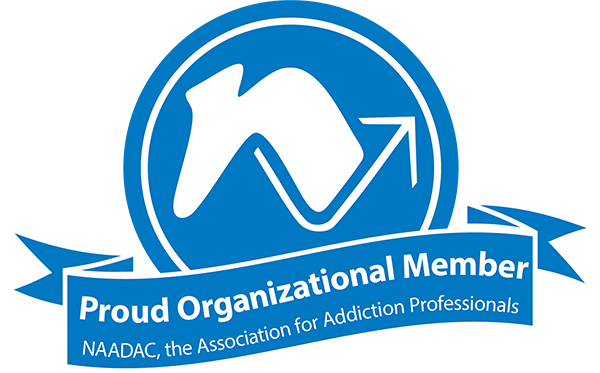Recovery from mental illness begins with one core tenet — an understanding that our behaviors are learned, linked to our mindset and thoughts. Unhelpful behaviors are indelibly influenced by negative thoughts and self-beliefs, which affect how you feel and how you act.
It also means that if thoughts, emotions and behaviors may follow a negative cycle, they can also be understood, explored and changed for the better.
Behavioral therapy addresses these very same learned patterns and opens your inherent abilities to reframe how you think, feel and act, a lifeline for anyone struggling with mental health challenges. For instance, one in five adults — 57.8 million people — experience mental illness each year, and just over 14 million, or one in 20, people struggle with a serious mental health condition, according to the National Alliance on Mental Illness (NAMI).
Yet studies also tell us that certain behavioral therapies are overwhelmingly effective in turning around the mindsets, outlooks and lives of the same people in those groups, from conquering anxiety disorders to Post-Traumatic Stress Disorder (PTSD) and other conditions.
Because behavior therapy understands the interplay between your thoughts, emotions and actions, it gives you the opportunity, power and leverage to reframe your mindset and take control of your mental health. Here’s what you need to know about various behavioral therapies, which one is right for you and how they can help.
What Is Behavioral Therapy?
Behavioral therapy is an umbrella term that includes a number of different behavioral therapies. Each of them is a type of cognitive-based talk therapy that can help you recognize, understand and change unhealthy or maladaptive thoughts and behaviors.
Since your thoughts, feelings and actions all have an influence on each other, behavioral therapy can help you change one aspect of that cycle — like a negative thought pattern or an avoidance behavior linked to trauma — and create a positive ripple effect through the others.
A behavioral therapy session can be either one-on-one with a behavioral therapist (a counselor, therapist or psychologist) or in a group setting with other people in recovery. Both settings are a chance to talk about your experiences and challenges in the day to day.
As your therapist learns more about you, they’ll work to help you identify common thought patterns that don’t serve you well or are setting you back. They’ll help you become an expert in your own thinking by learning to spot unhelpful, sometimes automatic, thought patterns that can influence how you feel and how you act on those emotions — cognitive distortions that can include catastrophizing, fatalistic or black-and-white thinking, jumping to conclusions, focusing on negative situations or disqualifying positive ones.
For example, “I’m worthless and unlovable” is often a belief consistent in people suffering from depression, which can prevent them from making the effort to meet new people and learn that they are, indeed, worthy and capable of being loved and embraced by others. In behavioral therapy, once you’ve begun to gain awareness of these types of distorted thoughts, you can examine the evidence for and against them and develop more realistic perspectives and beliefs. Reshaping and reframing that narrative allows you to feel better about yourself and act in ways that benefit, not work against, you.
What Does Behavioral Therapy Treat?
Because there are several types of behavioral therapy, they’re geared toward treating a range of mental health conditions and disorders, including:
- Depression
- Anxiety
- Panic disorders
- Phobias
- Obsessive-compulsive disorder (OCD)
- Post-traumatic stress disorder (PTSD)
- Bipolar disorder (BD) and borderline personality disorder (BPD)
- Attention-deficit hyperactivity disorder (ADHD)
- Insomnia and sleep issues
- Anger management issues
What Is the Focus of Behavioral Therapy?
How is behavior therapy different than psychoanalysis? Comparisons are often made between the two. While both share some similarities and overlap, their focus is different. Psychoanalysis, a type of therapy spearheaded by Sigmund Freud, mainly focuses on exploring the root of mental illness in the subconscious mind, such as repressed traumatic memories from the past.
Behavioral therapy, on the other hand, centers on taking action on your mindset and developing practical solutions you can set in motion in the present day. What’s currently driving your depression and anxiety? What tangible changes can you make now to reframe your narrative and influence better, more positive self-beliefs and behaviors?
Behavior therapy still acknowledges your past and history, since those are integral to your development and current mental state — but its current-day, forward-looking clinical structure is one way how behavior therapy is different than psychoanalysis, since it empowers you to take charge of redirecting your mental energies and emotions in the here and now.
Types of Behavioral Therapy
The good news about pursuing behavioral therapy is the variety of therapies you can choose from, since some therapies are more tailored for treating certain conditions and symptoms. Here’s a look at some of the therapies you might try:
Acceptance and Commitment Therapy (ACT)
What is Acceptance and Commitment Therapy? It’s a type of therapy meant to help you accept, without judgment, that your thoughts and feelings were valid in the past, and commit to making positive changes aligned with your value system.
This makes ACT Acceptance and Commitment Therapy a way to go easy on yourself. If you have depression or anxiety and tend to ruminate or worry, it’s OK to think or feel that way. It’s all part of being human, but maligning or criticizing yourself for them can just exacerbate your mental health and your life and make it more difficult to reframe them into something more positive.
Acceptance and Commitment Therapy ACT makes use of six Acceptance and Commitment Therapy techniques:
- Accepting your emotions purely as they are
- Making a clean break from all negative thinking
- Becoming mindful and present in each waking moment
- Viewing yourself fully and completely as a whole person
- Creating a list of values important to you
- Working to attain personal goals based on those values
As sessions progress, you’ll work with your therapist on each of the six core processes using Acceptance and Commitment Therapy exercises and Acceptance and Commitment Therapy worksheets.
Cognitive Behavioral Therapy (CBT)
The goal of Cognitive Behavioral Therapy (CBT) is in its name — that your thoughts (cognition), feelings and behaviors are closely interconnected. All three are visualized as points on the CBT triangle, where each one has a relationship with the others.
By identifying negative thought patterns through CBT therapy, you can change how you feel and act. Imagine struggling with depression, where the ways you think, feel and go about your world only point in a negative direction.
Now picture how that can change for the better. Someone with social anxiety might always think, “Everyone is judging me,” even when they aren’t, which can provoke self-consciousness and avoidance. Through Cognitive Behavioral Therapy examples and CBT techniques, like learning to recognize cognitive distortions, looking at them rationally and developing solid coping skills are just a few ways to enact change. You’ll be able to challenge these beliefs and replace them with new ones that serve you well.
CBT’s flexibility is just one reason why it’s such a tried-and-true treatment that’s as effective as it is accessible depending on your challenges. Trauma focused Cognitive Behavioral Therapy, mindfulness based Cognitive Behavioral Therapy, Cognitive Behavioral Therapy for anxiety and
Cognitive Behavioral Therapy for insomnia are just a few of the different versions of CBT you’ll find.
Dialectical Behavior Therapy (DBT)
What is Dialectical Behavior Therapy? Developed in the 1970s by Dr. Marsha Linehan, DBT is actually an enhanced type of CBT that’s designed for people who feel overwhelmingly strong emotions or experience emotional dysregulation — a common symptom in personality disorders like BD and BPD.
The term “dialectical” means to combine opposite ideas — like ACT, Dialectical Behavior Therapy DBT teaches you to accept your reality and emotions while also working to positively change your mindset/emotional state/behaviors. In DBT therapy sessions, you’ll learn the four different Dialectical Behavior Therapy components to reach these goals:
- Mindfulness to remain fully aware and cognizant of the present
- Distress tolerance to better manage emotions even in the most stressful moments
- Emotional regulation to maintain better control over how you feel, no matter how intensely
- Interpersonal effectiveness to build better relationships with healthy boundaries
During therapy, these DBT skills are taught using the Dialectical Behavior Therapy Skills Workbook. In an outpatient setting, you’ll be able to work through the exercises in the DBT workbook both in session and when you return home at night.
Exposure Therapy
If you’ve been afraid of something — a person, a place, an unpleasant or traumatizing memory — the natural instinct is to avoid it and the distress and pain it brings. While shelving it to the back of the mind might make sense in the short term, repressing or failing to actively address this type of avoidance can do more harm than good as time progresses.
What is exposure therapy, and how can it help? It’s a type of therapy designed to help you face and overcome those fears. During a CBT exposure therapy session, confronting a source of your fear is gradual in a safe space.
With your therapist, it can take many forms. For exposure therapy for anxiety, it could be in vivo exposure, where you’ll directly face a feared thing or situation, from a distance at first. In imaginal exposure, you may vividly imagine and describe a traumatic memory to better process it. Or prolonged exposure therapy, a treatment for PTSD demonstrating that one’s fears aren’t dangerous and don’t need to be avoided.
According to the American Psychological Association, exposure therapy can be a great help for anxiety and panic disorders, phobias and other disorders for its ability to help decrease the fears and associations you may have with a memory, person situation or place, and to develop newer, healthier beliefs about them — free of fear.
Motivational Interviewing
What is motivational interviewing? It’s an important type of behavioral therapy because it helps motivate you to make positive life and behavioral changes when you may otherwise feel ambivalent to do so. It’s a particularly helpful type of treatment for people who might be in denial about their mental health struggles, or for those reluctant to enter treatment and see the value that it brings.
Motivational interviewing therapy was originally developed by psychologists William Miller and Stephen Rollnick to treat alcohol use disorder, but it’s become an effective form of treatment for mental health conditions. There are four motivational interviewing principles shared between you and your therapist: expressing empathy for your perspective and experiences; supporting your own self-efficacy (the belief in your own ability to embrace change; rolling with resistance instead of fighting it; and identifying discrepancies and filling the gap between your current behaviors and future goals.
In a given session, your therapist will make use of four motivational interviewing techniques know by the acronym motivational interviewing OARS:
- Open-ended questions inviting you to freely share what’s on your mind — your thoughts, your fears, your challenges in life — without being guided in a certain direction
- Affirmations, self-affirming statements that honor your strengths and recognize potentially new and positive behaviors
- Reflective listening, making sure that you’re genuinely heard with empathy, compassion and understanding to foster motivation to change
- Summaries, essentially a recap of your session/conversation creating clarity and closure for the session
Likewise, there are six motivational interviewing stages of change you can anticipate to see through the course of treatment: precontemplation, when you may not yet be considering change; contemplation, considering the concept of change, however ambivalent; preparation, taking your first steps toward commitment; action, taking proactive steps toward change; maintenance, sustaining your new goals for at least six months; and relapse, a potential, yet avoidable step in place in the event someone falls back to their old behaviors, necessitating further treatment.
Rational Emotive Behavior Therapy (REBT)
Developed by psychologist Albert Ellis in 1955, Rational Emotive Behavior Therapy, or REBT, is a type of behavioral therapy based on the notion that what we think about a traumatic event, not the experience itself, is what leads to emotional distress and upset — and by challenging those irrational beliefs, you can replace them with more rational ones that align with better behaviors.
“With an emphasis on the present, individuals are taught how to examine and challenge their unhelpful thinking which creates unhealthy emotions and self-defeating/self-sabotaging behaviors,” notes the Albert Ellis Institute (AEI) about Albert Ellis Rational Emotive Behavior Therapy.
Two of Ellis’ concepts when crafting Rational Emotive Behavior Therapy REBT were awfulizing and musterbating, two types of fatalistic thinking that can negatively influence unhealthy and self-defeating ways of feelings and acting. (The former involves all-or-nothing, catastrophic thinking, while the latter comprises the type of “must,” “should,” “could” and “never” absolutist thinking that can only let one down.
Through Rational Emotive Behavior Therapy techniques, you can identify, confront and replace rigid and illogical beliefs, no matter how attached you’ve been to them. In a common Rational Emotive Behavior Therapy example, take someone with social anxiety who thinks, “Everyone is judging me as soon as I step outside the house.” REBT establishes that this is an irrational assumption that can be reframed into the more flexible, “Some people might notice me, but most are focused on going about their own day. I can’t control what others think, and my self-worth doesn’t depend on their approval.”
These types of mental shifts are one reason why REBT is such an accessible type of behavioral therapy that harnesses your mental power to effect change.
Behavioral Therapy at Aliya Mental Health
Our clinical philosophy at Aliya Health Group is to treat you as a whole person — mind, body and spirit — and our behavioral health therapies take this to heart. We’re dedicated to helping you reestablish this connection with compassion and care. We provide each of the behavioral therapies on this page across our nationwide network of treatment centers, with a team of credentialed specialists who meet you where you are in your journey right now.
If you’re wondering when to see as behavioral therapist or have questions about mental health treatment, reach out today. We can guide you through the process, verify your insurance coverage and give you the answers you need, whether you’re considering therapy for yourself or inquiring for a loved one. Call us or fill out our secure contact form to find a behavioral specialist near me.
You can change your life with one phone call.
References
How to recognize and tame your cognitive distortions – Harvard Health
Behavioral Therapy: Definition, Types & Effectiveness
Acceptance and Commitment Therapy (ACT): What It Is
What is Cognitive Behavioral Therapy?.
Dialectical Behavior Therapy (DBT): What It Is & Purpose
Motivational Interviewing | Psychology Today
Motivational Interviewing: Fourth Edition: Helping People Change and Grow





